Krakow ARtour. Old Town anew.
AR mobile app
How can Krakow both inspire artists and commemorate them through the city space? Where can the city save its aspirations and dreams or find a place for a new industry? Does everything have to fit together? Can a tenement house emblem inspire greater diversity of the Krakow biotope?
Thanks to the application, equipped with augmented reality (AR) technology, you can find hints and answers to these questions while taking a walk along the multi -layered trail of the 20th century architecture of the Krakow Old Town. Discover amazing stories inspiring us to create a new and sustainable future.
The walk was created in cooperation with the Krakow-based BudCud studio, which specializes in creating diverse, informal spatial environments with plenty of references and culture codes.
HOW DOES IT WORK?
Download and install the free app Krakow ARtour.
Look at the map, find the active points marked on it, and hit the road to the Krakow Old Town! To activate the point where you are heading, choose the number of the corresponding pin on the map. When you get to the selected location, you will find the desired virtual pin by looking through your phone’s camera. A yellow number will appear on the bottom right corner of the screen. That means you’re in the right place.
For example: you have activated on the map point # 4 and you arrived at św. Jana street from the Main Square. The number 4 appears in the application and the story number 4 is activated: Feniks with many faces. Now point the phone at the facade of the building – an illumination of the story will appear. In the right bottom square, you can choose to read it by clicking on the menu with the desired number.
The free application Krakow AR Tour is available to download from AppStore and GooglePlay.
Concept and coordination of the project: Elwira Wojtunik, Popesz Csaba Láng
Substantive study: BudCud
UX: Popesz Csaba Láng
UI: Milena Malecha

1. City of symbols
House under the Globe
Długa Street 1, Kraków
Built 1904-1906
Architects: Franciszek Mączyński, Tadeusz Stryjeński
Photo in app: Paweł Krzan
Take the example of the House under the Globe to see how architecture can manifest the ambitions, aspirations and dreams of its hosts. Recognize the symbolism of progress and development in the
Old Town building, its façade emblems, the decor of the meeting room by Józef Mehoffer or the richness of the finishing touches. See the richly decorated interior of the Mehoffer Hall in the application, including a phenomenal plafond depicting eight snakes winding among peacock feathers and a canvas depicting the triumph of man over the elements – so consistent with the idea of progress and development guiding the Chamber of Commerce and Industry.
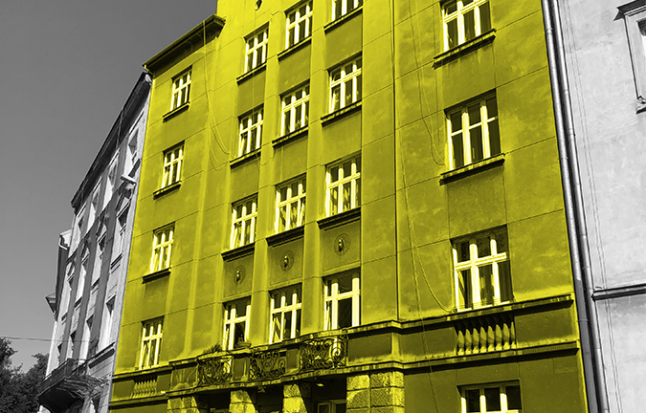
2. Urban hive
Tenement house under the Bees
św. Marka Street 8, Kraków
Built: 1937 – 1938
Architect: Fryderyk Tadanier
Decorative emblems of Krakow’s tenement houses of the interwar period refer to the history of the city or the ethos and history of the investor. Find out what the bas-relief of the tenement house under the Bees is buzzing about and what lesson the three facade bees teach us about modernity.
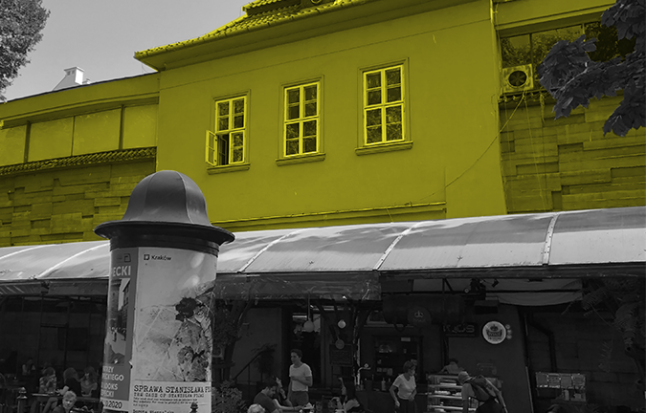
3. City of contrast
Contemporary Art Gallery Bunkier Sztuki
Szczepański Square 3, Krakow
Built: 1959 – 1965
Architect: Krystyna Tołłoczko-Różyska
The building of the Bunkier Sztuki gallery is another important element of the multi-layered and complex organism of the Old Town. See in the application how this building – a manifesto of the present day at the Planty Park – was integrated into the historical context of the neighbouring buildings. Notice the contrast (but also the harmony) of the past, present and future in the design of the city.
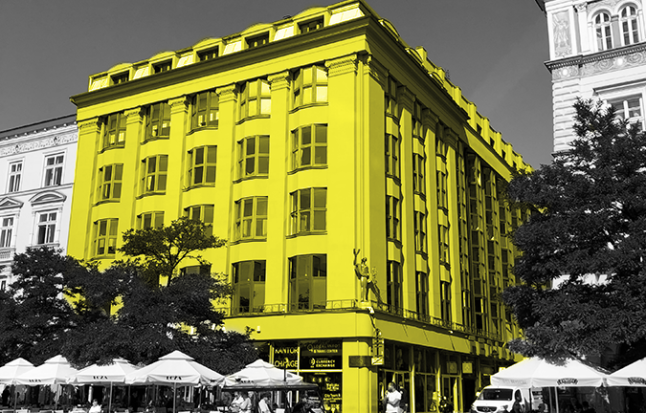
4. Feniks with many faces
The tenement house of the Life Insurance Company Feniks
Main Square 41, Krakow
Built: 1929 – 1932
Architect: Adolf Szyszko-Bohusz
Krakow’s “Feniks ” has been revived several times. Fortunately, from the side of św.Jana street , a fragment of its original facade has been preserved. While looking at this facade – juxtaposed with the historicizing stylisation in the application – it’s worth considering the role of architecture in the service of political propaganda.
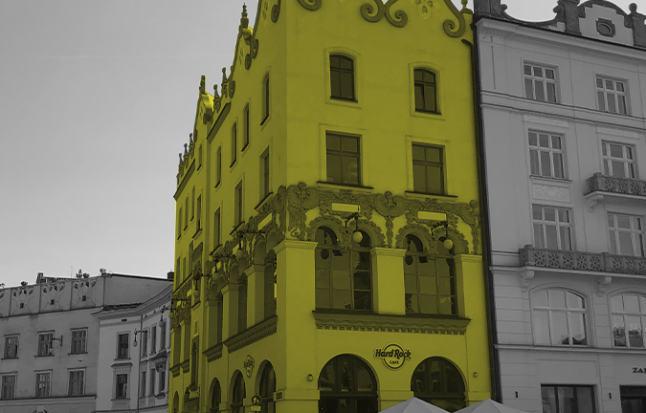
5. A city of mutual inspiration
The Tenement House Czynciel
Mariacki Square 9, Krakow
time of creation: 1907 – 1908
Architects: Rajmund Meusa, Ludwik Wojtyczka
Just as the city is an inspiration for artists, its architecture should also tell stories, appreciate and pay tribute to local, outstanding artists. Take a closer look at the façade decorations of the Czynciel Tenement House. In the architectural details of the building’s facade, discover the work of the outstanding artist who wrote his greatest work while living in this house.
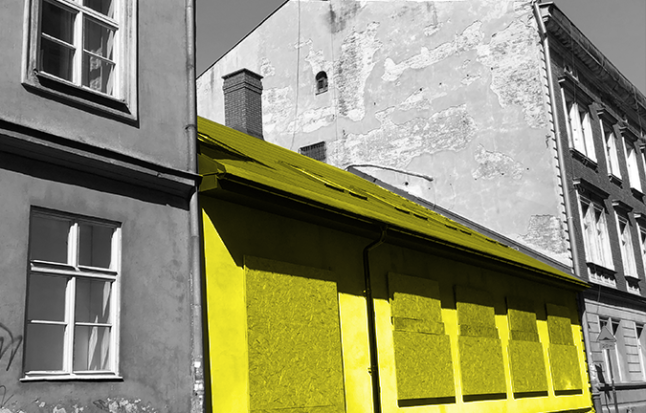
6. Old Town Industry
The Zieleniewski Forge
św. Krzyża Street 16, Krakow
Built: 1837-1839
The old town location of Kuźnia Zieleniewskich is even more surprising as it is a place where the modern industry of Krakow was born. Today, we would call this plant innovative because it used advanced (for those times) technologies, producing elements of Krakow’s infrastructure. Find out what the Old Town forge was producing. Get into the gears of the city’s functional program and think about where in the urban fabric there is room for new industry.
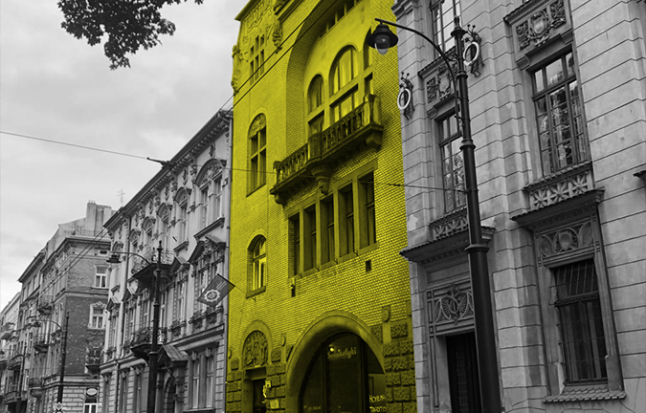
7. City of Architecture and Nature
The office of the Krakow Technical Society
Straszewskiego Street 28, Krakow
Built: 1905-1906
Architect: Sławomir Odrzywolski
Discover how Krakow’s natural spaces influence the city’s architecture. Find out why the façade of the Krakow Technical Society House is lined with white glaze and what influence the Planty had on the choice of façade finish. See what other connections to the urban biotope can be seen in the architecture of this truly Art Nouveau building.
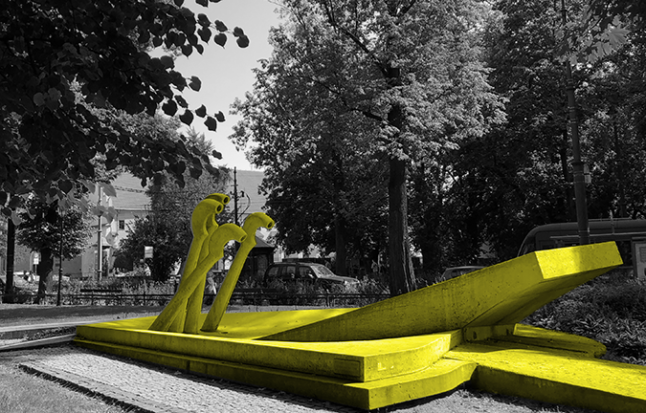
8. City of abstraction
Fryderyk Chopin’s fountain
Franciszkańska Street, Krakow (Planty Gardens)
Designed: 1948-1949
Built: 2006
Architect: Maria Jarema
Did you know that the Fryderyk Chopin Fountain, apart from commemorating the work of the Polish pianist and composer, also stands as a monument to an outstanding artist from the Krakow Group?
Decipher the meaning behind the abstract design of the fountain and learn more about the water in the city and see how much of it you use in a week. Maybe it is worth turning off the tap?
The project was created as part of the Krakow program “Kultura Odporna”




